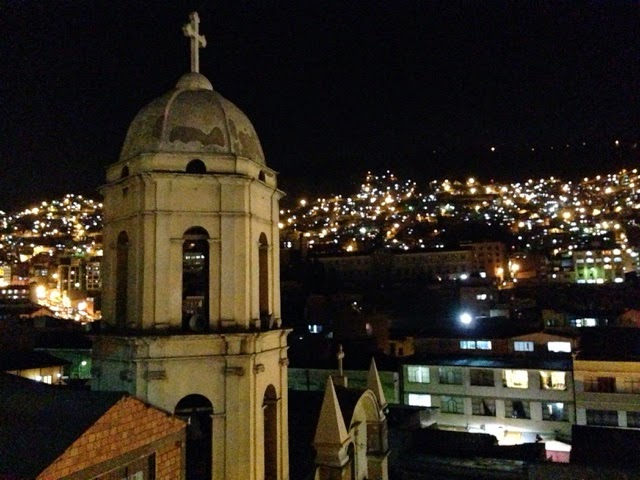One of Nina's longtime goals was to see Machu Picchu. Well in advance she had also planned to do a 5 day hike from Cusco to get there, but after our El Misti debacle we were exhausted and couldn't face up to another camping/hiking challenge just yet.
Instead we chose to go by road on a 2 day/1 night excursion. What a terrible idea! It took 7.5 hours to drive each way on roads that were either windy mountain passes or one lane death dirt roads resting on cliffs with a 200m drop to the side. To summarise that's about 18 hours of travel in 36 hours. If I have any advice for you it's If you ever go to Machu Picchu either take the train or do the 5 day Inca trail - apparently the scenery and food is amazing on the hike!
In any case while we erred in our choice of getting to MP, it was always going to be worth it. After a small meltdown in the morning not being able to locate our bus tickets up the mountain, we finally got into the Inca ruins at 7am.
In short, it's very impressive. The scenery around the city that housed 1,000 Inca back in the day was stunning and the misty weather in the moning made for outer worldy, Avatar like lighting effects. While the ruins themselves are just ok in my opinion, the terraces and foundations the inca laid earn them much respect. Not to mention they bullt the thing on top of a pretty steep, jagged mountain.
The highlight of the day for me was just sitting on one of the high up terraces, polishing off a spot of lunch while admiring the view in the warm sunlight. Once off the mountain I was keen as hell to get back to our hostel and out of Cusco, as I wasn't overly partial to the place...too touristy and cold for my liking.
One more tip, if you ever have a chance go mountain biking down the hills outside of Ollytambo on the way to MP. I reckon it's about 50km of downhill riding on tarmac with amazing views stretching for miles. I would have loved to have done it.
The super hard granite (?) stone blocks were perfectly crafted to fit together without morter. The better quality ones like this were used for important buildings like temples and such. You can't even a fit a credit card in the seams, they are that well shaped. Apparently this also helps in earthquakes as the blocks just bounce around and fall back into place.
In the early dawn hours the light has an almost mystical appearance as it rises over the mountains behind Machu Picchu.
We also learned that a lot of the so called ruins have been restored, rather than being displayed in the original state.
There is a little temple and some ruins right at the top of Huayna Picchu in front (the big mountain). Also if you apply in advance you can climb the windy path and get great views of the main ruins.
Looking back over the terraces of Machu Picchu. The terraces were very important for stability and also the foundations under each terrace is perfect for agriculture and drainage (sand, stones, dirt etc). They were the pioneers of modern landscape gardening - these guys were indeed very smart! Strange they died out so quick.
A quick selfie at our lunch location for the day. Not a bad place to have a bite.
Bugger, the panorama didn't work out as well as I'd hoped!
A final farewell to the ruins before we departed back down the mountain. Nina was back to being cold as you can tell (it was probably about 22 degrees at that point!).






















































